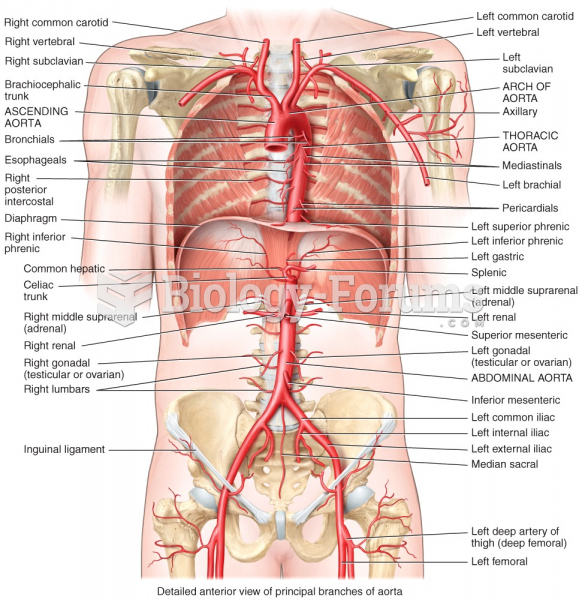|
|
|
The most common treatment options for addiction include psychotherapy, support groups, and individual counseling.
Cancer has been around as long as humankind, but only in the second half of the twentieth century did the number of cancer cases explode.
Egg cells are about the size of a grain of sand. They are formed inside of a female's ovaries before she is even born.
The first war in which wide-scale use of anesthetics occurred was the Civil War, and 80% of all wounds were in the extremities.
Many people have small pouches in their colons that bulge outward through weak spots. Each pouch is called a diverticulum. About 10% of Americans older than age 40 years have diverticulosis, which, when the pouches become infected or inflamed, is called diverticulitis. The main cause of diverticular disease is a low-fiber diet.







